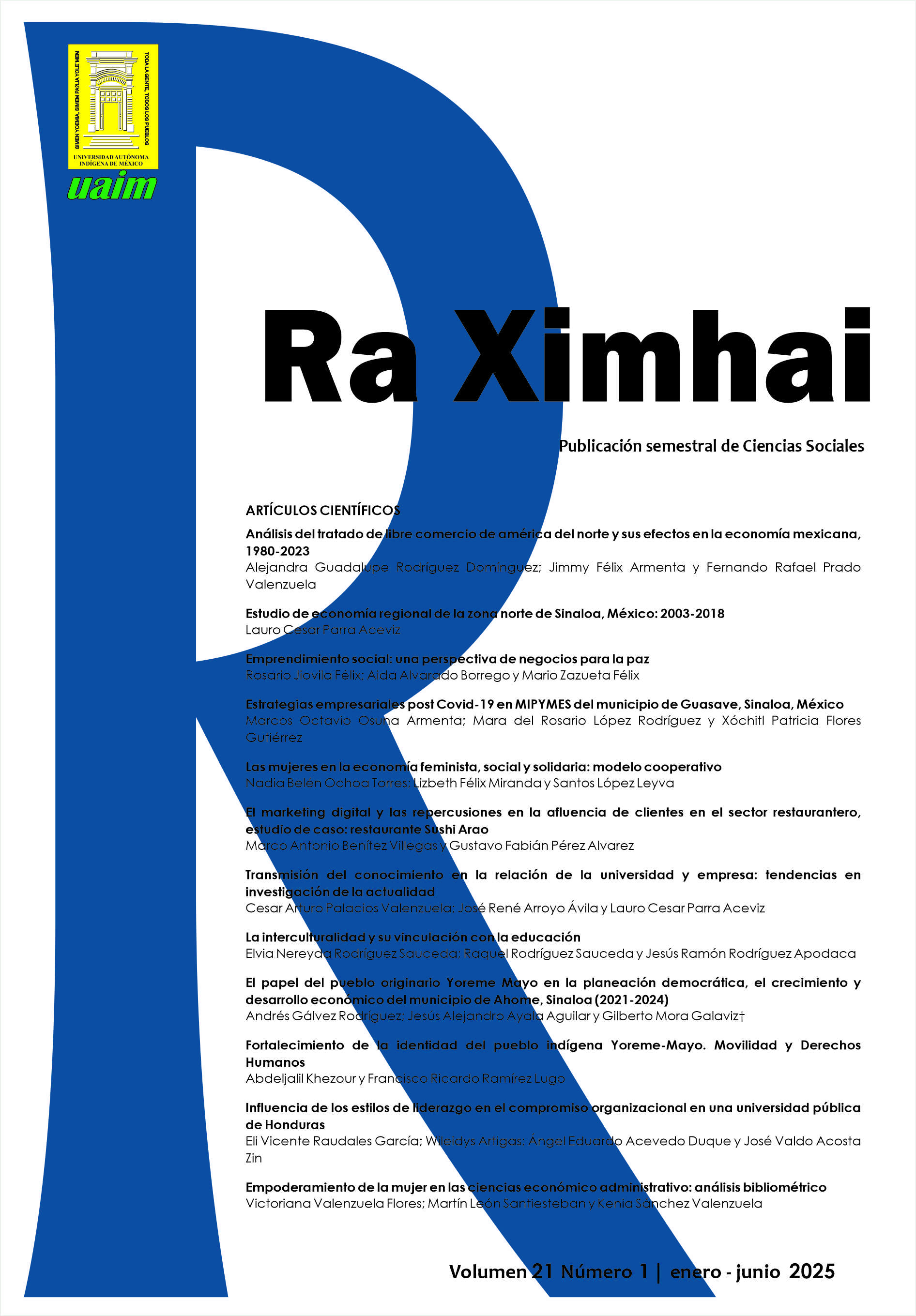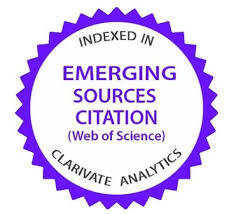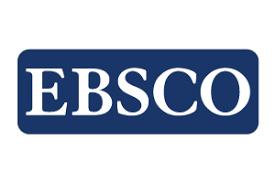Empoderamiento de la mujer en las ciencias económico administrativo: análisis bibliométrico
DOI:
https://doi.org/10.35197/rx.21.01.2025.12.vvPalabras clave:
bibliométrico, empoderamiento de la mujer, ciencias económicas administrativas, objetivos de desarrollo sostenibleResumen
El empoderamiento de la mujer, se basa en los Objetivos de Desarrollo sostenible de la agenda 2030 de las Naciones Unidas; buscando la plena participación de la mujer en la toma de decisiones en todos los niveles jerárquicos de las instituciones públicas y privadas. El objetivo del estudio es conocer la investigación científica que se realiza de forma cuantificable. Para ello, este artículo propone un análisis bibliométrico donde se estudiaron 32 años entre 1991 y 2023 sobre el empoderamiento de la mujer en el área de ciencias económicas administrativas utilizando la base de datos Web of Science. Además, se identifican autores, instituciones, países y fuentes. La evolución del estudio a lo largo del tiempo muestra el aumento de la importancia del tema, ya que en 1991 existen 8 documentos y para el 2023 se reportó una producción de 617, observando que en los años 2020 y 2021 fueron los de mayor producción. Se utilizó la herramienta de software VOSviewer para construir y visualizar redes bibliométricas. Donde se muestran mapas gráficos a través de enlace bibliográfico, análisis de citaciones, coautoría y coocurrencia de palabras clave de autor.
Descargas
Citas
Ahearne, M., Mathieu, J., & Rapp, A. (2005). To empower or not to empower your sales force? An empirical examination of the influence of leadership empowerment behavior on customer satisfaction and performance. Journal of Applied psychology, 90(5), 945.
Al Khayyal, A.O., Alshurideh, M., Al Kurdi & B., Salloum, S.A. (2021). Women Empowerment in UAE: A Systematic Review. Advances in Intelligent Systems and Computing, 1261, 742-755.
Avolio, B. J., Zhu, W., Koh, W., & Bhatia, P. (2004). Transformational leadership and organizational commitment: Mediating role of psychological empowerment and moderating role of structural distance. Journal of Organizational Behavior: The International Journal of Industrial, Occupational and Organizational Psychology and Behavior, 25(8), 951-968.
Banerjee, S., Alok, S. & George, B. (2020). Determinants of Women Empowerment as Measured by Domestic Decision-Making: Perpective from a Developing Economy. Advanced Issues in the Economics of Emerging Markets (International Symposia in Economic Theory and Econometrics), 1-12.
Bénabou, R., & Tirole, J. (2003). Intrinsic and extrinsic motivation. The review of economic studies, 70(3), 489-520.
Bharti, N. (2021). Role of cooperatives in economic empowerment of women: a review of Indian experiences", World Journal of Entrepreneurship, Management and Sustainable Development, 617 631.
Biswas, T. & Kabir M. (2004). Measuring women´s empowerment: Indicators and measurement techniques. Sage journalds, 64-77.
Bitner, M. J., Booms, B. H., & Mohr, L. A. (1994). Critical service encounters: The employee's viewpoint. Journal of marketing, 58(4), 95-106.
Bono, J. E., & Judge, T. A. (2003). Self-concordance at work: Toward understanding the motivational effects of transformational leaders. Academy of management journal, 46(5), 554-571.
Brodie, R. J., Ilic, A., Juric, B., & Hollebeek, L. (2013). Consumer engagement in a virtual brand community: An exploratory analysis. Journal of business research, 66(1), 105-114.
Buendía, I. & Carrasco I. (2013). Mujer actividad emprendedora y desarrollo rural en América Latina y el Caribe. Cuadernos de desarrollo rural, 21- 45.
Caputo, A., Marzi, G., Pellegrini, M. M., & Rialti, R. (2018). Conflict management in family businesses: A bibliometric analysis and systematic literature review. International Journal of Conflict Management, 29(4), 519-542. https://doi.org/10.1108/IJCMA-02-2018-0027
Chan, K. W., Yim, C. K., & Lam, S. S. (2010). Is customer participation in value creation a double-edged sword? Evidence from professional financial services across cultures. Journal of marketing, 74(3), 48-64.
Comisión Nacional para Prevenir y Erradicar la Violencia Contra las Mujeres (05 de abril de 2016). ¿Por qué es importante el empoderamiento de las mujeres para el desarrollo?. https://www.gob.mx/conavim/articulos/por-que-es-importante-el-empoderamiento-de-las-mujeres-para-el-desarrollo?idiom=es
Duflo, E. (2012). Women empowerment and economic development. Journal of Economic literature, 50(4), 1051-1079.
García. A., Cruz E. & Mejía C. (2022). Factores que impulsan e inhiben el empoderamiento femenino: una revisión de literature. Reflexiones, 1-19
Goetz, A. M., & Gupta, R. S. (1996). Who takes the credit? Gender, power, and control over loan use in rural credit programs in Bangladesh. World development, 24(1), 45-63.
Gumusluoglu, L., & Ilsev, A. (2009). Transformational leadership, creativity, and organizational innovation. Journal of business research, 62(4), 461-473.
Hartline, M. D., & Ferrell, O. C. (1996). The management of customer-contact service employees: An empirical investigation. Journal of marketing, 60(4), 52-70.
Hirsch, J. E. (2005). An index to quantify an individual's scientific research output. Proceedings of the National academy of Sciences, 102(46), 16569-16572.
Hirst, G., Van Knippenberg, D., & Zhou, J. (2009). A cross-level perspective on employee creativity: Goal orientation, team learning behavior, and individual creativity. Academy of management journal, 52(2), 280-293.
Jung, D. I., Chow, C., & Wu, A. (2003). The role of transformational leadership in enhancing organizational innovation: Hypotheses and some preliminary findings. The leadership quarterly, 14(4-5), 525-544
Kark, R., Shamir, B., & Chen, G. (2003). The two faces of transformational leadership: empowerment and dependency. Journal of applied psychology, 88(2), 246.
Kirkman, B. L., & Rosen, B. (1999). Beyond self-management: Antecedents and consequences of team empowerment. Academy of Management journal, 42(1), 58-74.
Kirkman, B. L., Chen, G., Farh, J. L., Chen, Z. X., & Lowe, K. B. (2009). Individual power distance orientation and follower reactions to transformational leaders: A cross-level, cross-cultural examination. Academy of management journal, 52(4), 744-764.
Liao, H., Toya, K., Lepak, D. P., & Hong, Y. (2009). Do they see eye to eye? Management and employee perspectives of high-performance work systems and influence processes on service quality. Journal of applied psychology, 94(2), 371.
Liden, R. C., Wayne, S. J., & Sparrowe, R. T. (2000). An examination of the mediating role of psychological empowerment on the relations between the job, interpersonal relationships, and work outcomes. Journal of applied psychology, 85(3), 407.
Mahmud, S., Shah, N. M., & Becker, S. (2012). Measurement of Women's Empowerment in Rural Bangladesh. World Development, 610-619.
Malhotra, A., Schuler, S.R. & Boender, C. (2002). Measuring Women’s Empowerment as a Variable in International Development. The World Bank, Washington DC.
Martinez-Lopez, F. J., Merigo, J. M., Gazquez-Abad, J. C., & Ruiz-Real, J. L. (2020). Industrial marketing management: Bibliometric overview since its foundation. Industrial Marketing Management, 84, 19-38. https://doi.org/10.1016/j.indmarman.2019.07.014
Martínez, S. (2017). Procesos de empoderamiento y liderazgo de las mujeres a través de la sororidad y la creatividad. Dossiers Feministes, 49-72.
May, D. R., Gilson, R. L., & Harter, L. M. (2004). The psychological conditions of meaningfulness, safety and availability and the engagement of the human spirit at work. Journal of occupational and organizational psychology, 77(1), 11-37.
Merigo, J. M., Gil-Lafuente, A. M., & Yager, R. R. (2015). An overview of fuzzy research with bibliometric indicators. Applied Soft Computing Journal, 27, 420-433. https://doi.org/10.1016/j.asoc.2014.10.035
Merigo, J. M., Pedrycz, W., Weber, R., & de la Sotta, C. (2018). Fifty years of Information Sciences: A bibliometric overview. Information Sciences, 432, 245-268 https://doi.org/10.1016/j.ins.2017.11.054
ODC (25 de September de 2015). Acquired of https://www.undp.org/es/sustainable-development-goals#igualdad-genero.
Objetivos de desarrollo sostenible (2030). Acquired of https://www.undp.org/es/sustainable-development-goals#:~:text=de%20Desarrollo%20Sostenible%3F-,Los%20Objetivos%20de%20Desarrollo%20Sostenible%20(ODS)%2C%20tambi%C3%A9n%20conocidos%20como,disfruten%20de%20paz%20y%20prosperidad.
Piccolo, R. F., & Colquitt, J. A. (2006). Transformational leadership and job behaviors: The mediating role of core job characteristics. Academy of Management journal, 49(2), 327-340.
Powell, T. C. (1995). Total quality management as competitive advantage: a review and empirical study. Strategic management journal, 16(1), 15-37.
Rico, M., & Gómez, J. (2009). La contribución económica de la mujer al desarrollo del medio rural de Castilla y León. Un análisis aplicado al turismo rural. Anales de estudios económicos y empresariales, 257-296.
Santos, F. M. (2012). A positive theory of social entrepreneurship. Journal of business ethics, 111(3), 335-351.
Seibert, S. E., Kraimer, M. L., & Liden, R. C. (2001). A social capital theory of career success. Academy of management journal, 44(2), 219-237.
Seibert, S. E., Wang, G., & Courtright, S. H. (2011). Antecedents and consequences of psychological and team empowerment in organizations: a meta-analytic review. Journal of applied psychology, 96(5), 981.
Shah, S. H. H., Lei, S., Ali, M., Doronin, D., & Hussain, S. T. (2020). Prosumption: Bibliometric analysis using HistCite and VOSviewer. Kybernetes, 49(3), 1020-1045. https://doi.org/10.1108/K-12-2018-0696
Smith, A., & Raven, R. (2012). What is protective space? Reconsidering niches in transitions to sustainability. Research policy, 41(6), 1025-1036.
Spreitzer, G. M. (1995). Psychological empowerment in the workplace: Dimensions, measurement, and validation. Academy of management Journal, 38(5), 1442-1465.
Spreitzer, G. M. (1996). Social structural characteristics of psychological empowerment. Academy of management journal, 39(2), 483-504.
Valenzuela Flores, V., León Santiesteban, M., & Sanchez-Valenzuela, K. (2024). Evaluación en la Gestión de Institutos de la Mujer en Municipios del Estado de Sinaloa. Ciencia Latina Revista Científica Multidisciplinar, 8(4), 11634-11647. https://doi.org/10.37811/cl_rcm.v8i4.13329
Van Eck, N.J., & Waltman, L. (2010). Software survey: VOSviewer, a computer program for bibliometric mapping. Scientometrics 84, 523–538.
Van Knippenberg, D., & Sitkin, S. B. (2013). A critical assessment of charismatic—transformational leadership research: Back to the drawing board? The Academy of Management Annals, 7(1), 1-60
Zhang, X., & Bartol, K. M. (2010). Linking empowering leadership and employee creativity: The influence of psychological empowerment, intrinsic motivation, and creative process engagement. Academy of management journal, 53(1), 107-128.
Zhang, Z., Zyphur, M. J., & Preacher, K. J. (2009). Testing multilevel mediation using hierarchical linear models: Problems and solutions. Organizational Research Methods, 12(4), 695-719.
Descargas
Publicado
Cómo citar
Número
Sección
Licencia

Esta obra está bajo una licencia internacional Creative Commons Atribución-NoComercial 4.0.
Usted es libre de:
- Compartir — copiar y redistribuir el material en cualquier medio o formato
- Adaptar — remezclar, transformar y construir a partir del material
- La licenciante no puede revocar estas libertades en tanto usted siga los términos de la licencia
Bajo los siguientes términos:
- Atribución — Usted debe dar crédito de manera adecuada , brindar un enlace a la licencia, e indicar si se han realizado cambios . Puede hacerlo en cualquier forma razonable, pero no de forma tal que sugiera que usted o su uso tienen el apoyo de la licenciante.
- NoComercial — Usted no puede hacer uso del material con propósitos comerciales .
- No hay restricciones adicionales — No puede aplicar términos legales ni medidas tecnológicas que restrinjan legalmente a otras a hacer cualquier uso permitido por la licencia.








